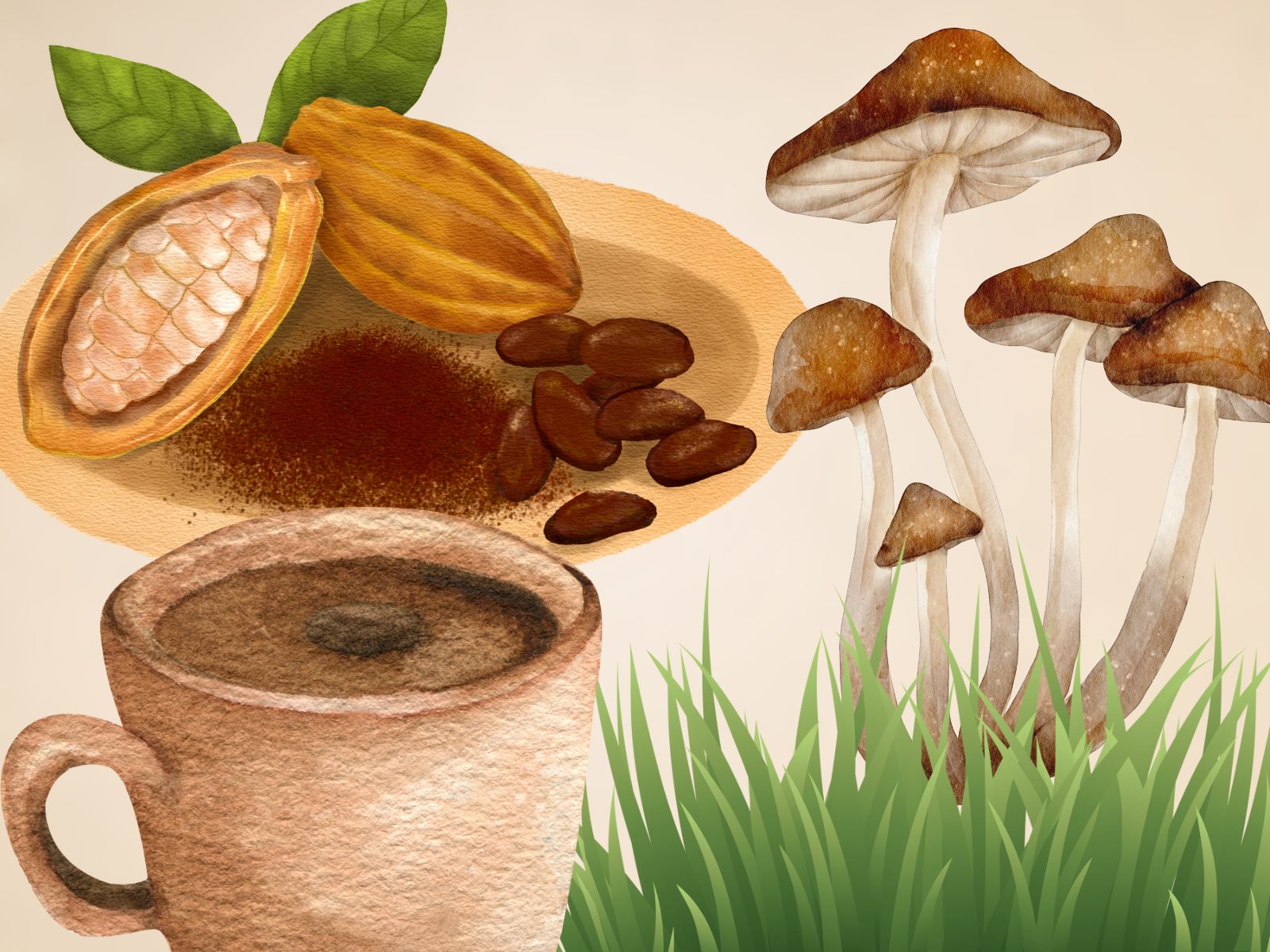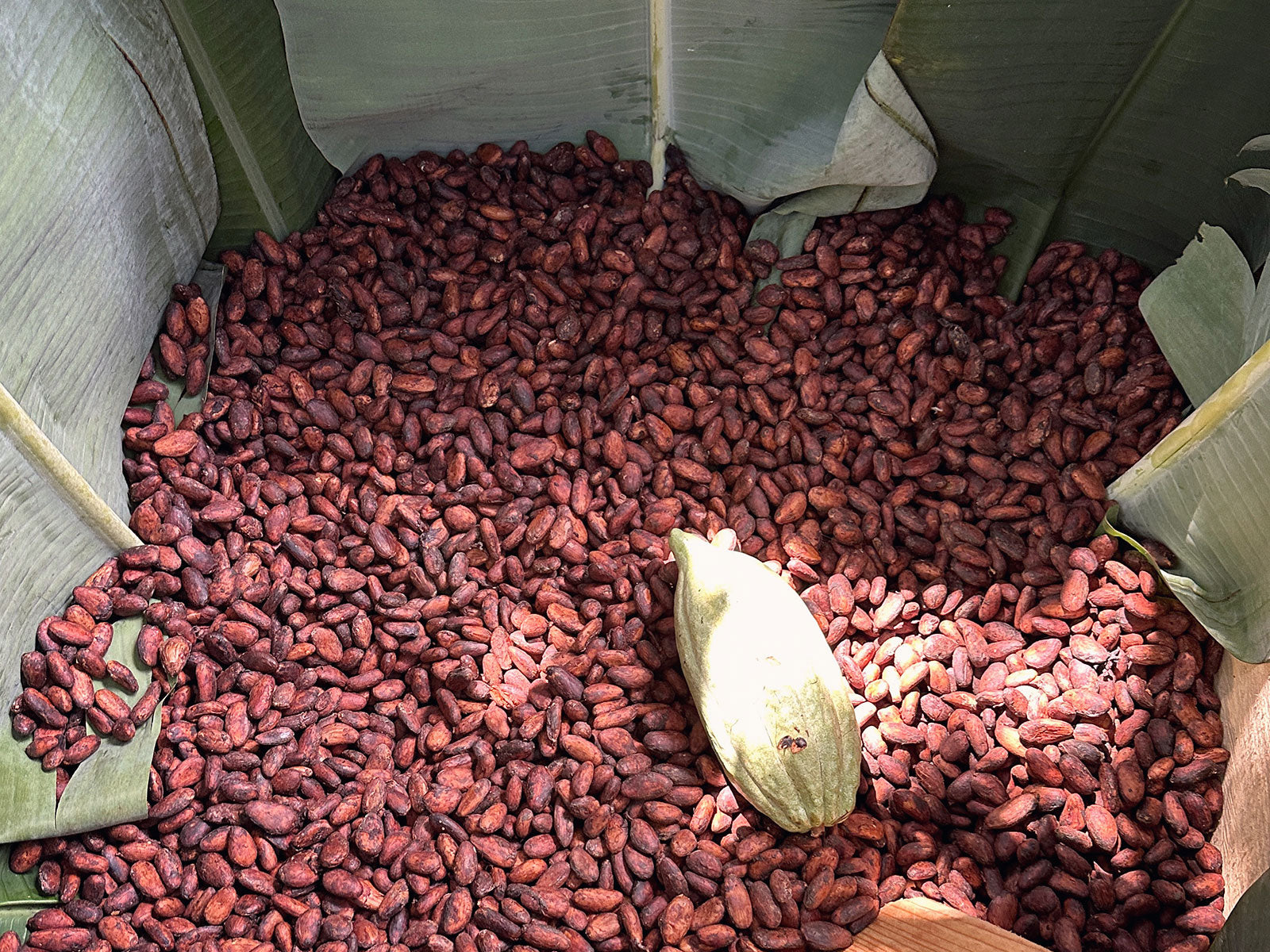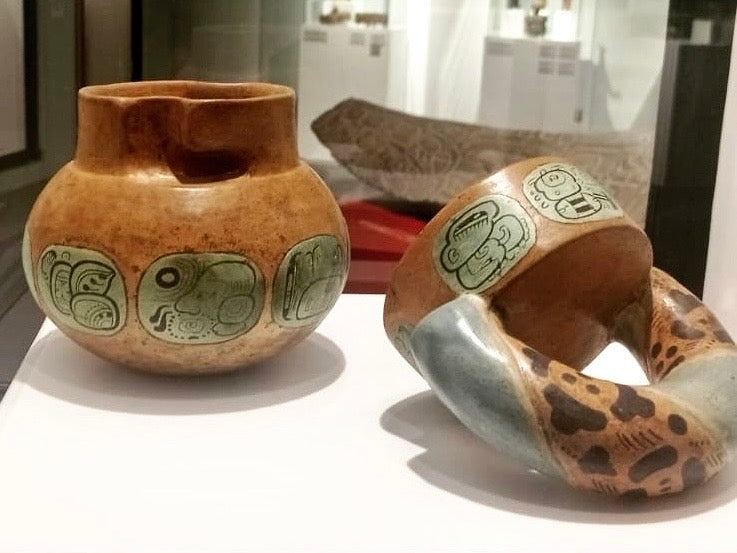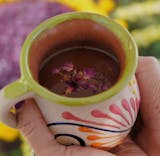Everyone has had an experience of seeing mold grow on food.
It’s most common in perishable foods – that is, foods that have to be kept in the fridge or freezer. That’s why we keep them in colder temperatures: to prevent the growth of pathogens that can cause disease. [1, 2]
Non-perishable foods are less susceptible to microbial growth and don’t require cold storage. This is the category that chocolate and ceremonial cacao fall into.
However, there are many steps in the production of cacao in which mold growth can occur.
When mold does grow on food, it can lead to the production of mycotoxins, which are basically what they sound like – toxic chemicals that result as a byproduct of mold growth. [3] (Note: The prefix “myco” means mushroom or fungus.) [4]
Many nutrition geeks are familiar with aflatoxins, which can be present in peanuts and some other common foods. Aflatoxin and ochratoxin are types of mycotoxins. [3]
Recently we’ve seen some people express concerns about mycotoxins in chocolate and cacao. Some also make claims that they’ve found “mycotoxin-free” chocolate.
How do we know if cacao and chocolate are free of mold and mycotoxins?
In order to make such claims, there has to be proper laboratory testing. Mycotoxin tests are hard to come by and are extremely expensive.
Because mycotoxins can really only appear if mold is present, in 2022 we started having all our pure cacao varieties tested for mold by a third-party laboratory.
The lab used the FDA’s “BAM” test for mold. [5] Our most recent tests were in September 2025, and no mold was found in any of our cacao varieties.
What are the reasons that mold and mycotoxins could appear in cacao or chocolate?
A 2014 review (a survey of existing research) published in the International Journal of Food Microbiology lays it all out very clearly. [6]
Mold can arise due to poor practices at every step including harvest, fermentation, drying, roasting, shelling, and/or grinding.
According to the study, mold could appear in finished cacao or chocolate for the following reasons:
- Using damaged cacao pods
- Fermenting too long or not turning the seeds (aka cacao “beans”) often enough
- Not drying the seeds well enough (which reduces the moisture content)
- Storing dried seeds for too long or in a place that’s too humid
- Not roasting the seeds to high enough temperatures
- Peeling husks mechanically instead of by hand (or anything else that allows too much of the husk into the grinding step)
One not mentioned in the study is whether there’s enough oversight during the production process. For example, since our cacao varieties are made mostly by hand in small batches, the artisans visually check pretty much all the cacao seeds and remove any that look bad.
All our cacao is grown in hotter lowlands and fermented and dried at the farms. Then the seeds are taken to higher elevations, either at or near Lake Atitlan, where the climate is drier and cooler. As far as we can tell, this was the traditional trade route of cacao, with most chocolate being produced in the highlands where the dried cacao can be stored longer without mold becoming an issue.
What are the most effective ways of preventing mold contamination in cacao?
The authors say, “Roasting nibs…at 105-150 ˚C, is considered to be the only step in chocolate production that destroys all microorganisms.” [7] That’s 221-302 ˚F! So claims of “raw” cacao being better aren’t taking that into account.
Our cacao is roasted over wood fire, the traditional way. The temperature is not measured. It’s more of an artisanal artform. But clearly from our test results, this is an effective practice.
Our cacao is also peeled by hand, which according to the study can cause a significant reduction in pathogens. “Mechanical shelling removed an average of 48% of ochratoxin A, while shelling by hand reduced between 50 and 100%.” [8] In other words, peeling the seeds by hand can potentially remove all ochratoxin A and be twice as effective as mechanical shelling.
Is there real reason to be concerned about mold and mycotoxins being in chocolate and cacao?
Heavy exposure can cause various health issues, but it doesn’t appear to be a huge concern with chocolate and cacao in general.
The study said that aflatoxin and ochratoxin A were found in 80% of chocolate samples tested, but that “concentrations are generally low.” [9]
Of course it’s always important to buy from a trusted brand with sufficient transparency about their sourcing and production methods. And that doesn’t just go for cacao and chocolate.
The reality is that mycotoxins are common in modern food sources. The study reports that chocolate and “cocoa” (the name usually used for more processed cacao products) are the source of only 5-6% of the typical dietary intake of ochratoxin A. [10]
What type of cacao has the least amount of mold and mycotoxin in it?
To know that we have to see the test results, and we’re happy to now be able to provide that to our community.
But even without test results, according to the review, the most reliable cacao would be made in small batches using mostly traditional, artisanal practices (that is, making it mostly by hand). This is the only way that each step can have enough oversight to prevent mold – and therefore mycotoxins – from appearing in larger amounts.
Thank you for supporting our model that helps uplift the ancient indigenous traditions of cacao cultivation and preparation. Our Mayan cacao partners thank you!
REFERENCES
[1] https://en.wikipedia.org/wiki/Mold
[2] https://en.wikipedia.org/wiki/Pathogen
[3] https://en.wikipedia.org/wiki/Mycotoxin
[4] https://www.dictionary.com/browse/myco-
[5] https://www.fda.gov/food/laboratory-methods-food/bam-chapter-18-yeasts-molds-and-mycotoxins
[6] https://www.researchgate.net/publication/260995198_Fungi_and_mycotoxins_in_cocoa_From_farm_to_chocolate
[7] Study p. 16
[8] Study p. 16
[9] Study p. 17
[10] Study p. 18
Related Posts

For thousands of years, ceremonial cacao and psilocybin mushrooms have been used by indigenous groups in Latin America.
Read More
Fermentation is an important step in cacao preparation and has a big effect on the flavor and aroma of the finished prod
Read More
In the last 40 years there have been incredible findings that expand and clarify the use of cacao in the ancient culture
Read More





